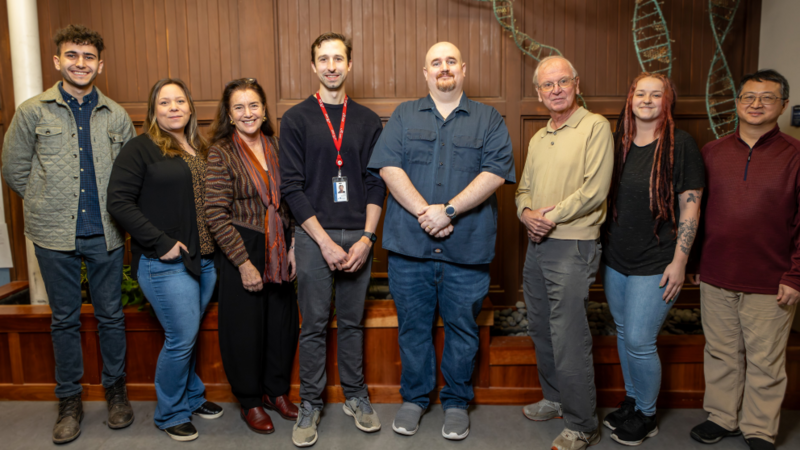Immune therapy without immune toxicity
Research Highlight | April 15, 2024
Immune checkpoint inhibition has provided an effective immunotherapeutic strategy for many cancers, including some not previously treatable. Drugs such as Keytruda (anti-PD1) and Yervoy (anti-CTLA-4) block “checkpoints” that prevent immune response to cancerous cells, leading to immune eradication of tumors in many cases. Unfortunately, inhibiting the checkpoints can also lead to autoimmune activity, with damage to heart (myocarditis) and skeletal muscle (myositis) cells a rare but particularly severe — and often lethal — side effect. Unfortunately, the fundamental immunological processes involved are not yet well understood.
Work led by Jackson Laboratory (JAX) Professor David Serreze, Ph.D., has provided a powerful new resource for researchers investigating how to block immune checkpoint inhibitor-associated myocarditis and myositis. “Murine MHC-Deficient Nonobese Diabetic Mice Carrying Human HLA-DQ8 Develop Severe Myocarditis and Myositis in Response to Anti-PD-1 Immune Checkpoint Inhibitor Cancer Therapy” was the cover story and named a “top read” for the April issue of the Journal of Immunology. In the paper, the researchers present a mouse model for immune checkpoint inhibitor-related myocarditis and myositis and also report on their research into the underlying mechanisms.

Modeling severe side effects
The team, which also included Research Scientist Jeremy Racine, Ph.D., and Professor and Scientific Director, JAX Mammalian Genetic Research Nadia Rosenthal, Ph.D., F.Med.Sci., works with the nonobese diabetic (NOD) mouse, which develops type 1 diabetes and other autoimmune conditions. To investigate immune checkpoint inhibitor side effects, they used CRISPR/Cas9 genomic editing methods to eliminate key elements of the immune system to investigate which immune cell subtypes contribute to myocarditis and myositis. They were then able to thoroughly characterize cardiac and skeletal muscle T-cells and identify their shared and unique characteristics.
The new mouse model, called NOD-cMHCI/II-/-.DQ8, is highly susceptible to spontaneous myocarditis and heart failure following treatment to inhibit the PD-1 immune checkpoint, a common cancer immunotherapy strategy. It also exhibited damaged muscle fibers in the diaphragm and soleus muscle, indicating a susceptibility to myositis as well. Following anti-PD-1 treatment, the team isolated T cells, part of the adaptive immune system normally associated with pathogen eradication, from both heart and skeletal muscles and found that they were capable of targeting both tissue types. Further research characterized the T cell subtypes involved, and the findings indicate that classically selected CD8+ T cells are not required for disease in the new model. A different T cell subset, CD4+, may be sufficient for initiating disease, or other T cell subsets may be involved. Further research using the model will help reveal the specific mechanisms at work.
The importance of immunotherapies
With the increased prevalence of cancer immunotherapies, there is a pressing need to better understand the side effects observed and to mitigate them in the patient population. The NOD-cMHCI/II-/-.DQ8 mouse model provides a uniquely effective resource for research into immunotherapy-induced myocarditis and myositis. Understanding the immunopathology underlying these severe side effects is essential for predicting which patients are most at risk and developing tailored treatment approaches to help prevent them.



